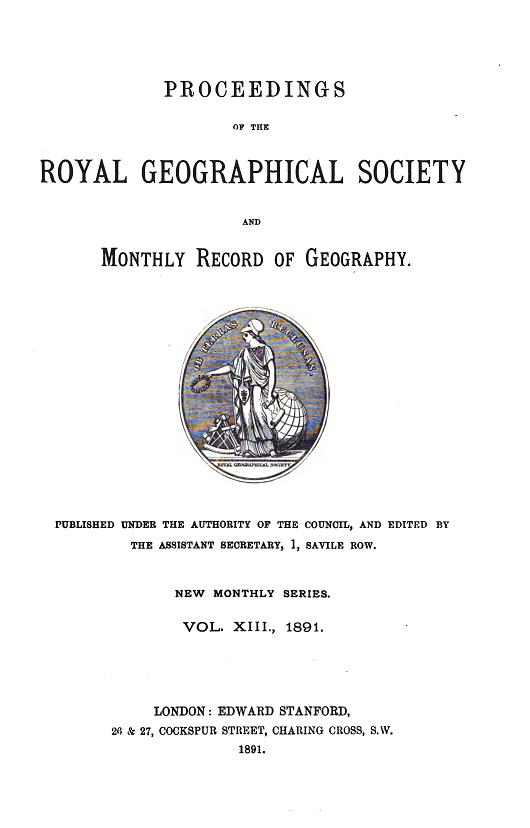|
370 |
PROCEEDINGS OF FOREIGN SOCIETIES.
|
|
visited by the English Blossom Expedition under Beechey, who took possession of them in the name of England; and in 1828 by the Russian expedition under Lütke, who found there two shipwrecked sailors belonging to a whaler, who had lived there for two years "a la Robinson Crusoe." In 1830 the group was, with the support of the English Consul at the Sandwich Islands, settled with colonists of all nationalities, who, without paying any regard to the English annexation, proceeded to make their own laws to the best of their ability as seamen and South Sea islanders. The visit of the English warship Raleigh, under Captain Quin, in 1837, effected no change in the situation. Perry, the leader of the American expedition to Japan, took possession of the southern group in the name of the United States, as it was likely to become an important coaling station between Shanghai and San Francisco. On the closing [sic] of Japan to foreigners, the Bonin Islands quickly lost the importance which they had for a short time gained, and they were consequently left to themselves. Then Japan, after an interval of a century, directed her attention to the group, and in 1861 despatched thither a hundred Japanese colonists. But in 1863 this attempt at colonisation, which was of too bureaucratic a character, was given up. In the middle of the seventies the islands were again visited by Russian, English, American, Japanese and German warships. In 1876 Japan took possession of the group definitely, and commenced a fresh and energetic scheme of colonisation. In 1881-3 the islands were surveyed, a map on the scale of 1:10,000 was prepared, and the last census showed a population of 355. The islands are subject to the governor of Tokio, and it was a tour of inspection undertaken by the latter which afforded Dr. Warburg the opportunity of visiting the Bonin Islands. First of all a visit was paid to Miyakeshima, the largest of the Chichido or "Seven Islands" group, an active volcano, as its name "burning mountain" signifies, the last eruption of which took place in 1884. This island, which in some parts attains an elevation of 2700 feet, is covered with bush and forest; it is four nautical miles in diameter, and there are about 4000 Japanese, grouped in five villages, living upon it. The prevailing rock formation is andesite, in which there appears a new description of rock, a compound of manganangite and andesite, called after the island "miyakite." The inhabitants live principally on sweet potatoes, millet, barley, and taro. Box-trees are much cultivated, and the wood is exported to Tokio for manufacture into ladies? combs. The vegetation is entirely Japanese. Somewhat different in this respect is the Hachijo group, a volcanic island, formed by two volcanoes which have not shown any activity for the last 300 or 400 years, with a small plain lying between them. It was originally settled with convicts two hundred years ago, and many old customs have been preserved here. The women are reckoned, according to the Japanese standard, to be especially beautiful. Silk stuffs, died with peculiar vegetable colours, form a much-prized article of export. The animal and vegetable world is poorer than that of Miyakeshima. At certain places along the shore there are gigantic walls, composed of fragments of andesite, which are used as bulwarks to protect the houses against the violent storms. The precipitous character of the shores prevents fishing. St. Peter, or Ponafidin, called by the Japanese Torishima ("bird island"), lies 160 nautical miles to the south. It is also an old volcano (1200 feet), with traces of an ancient crater, which is now quite cool. The island is completely uninhabited, but is covered with albatrosses, for which it is a great breeding place. Between this island and the northern part of the Bonin group, viz. the Perry group, consisting of three larger and some smaller islands, there is a clear space of 180 nautical miles, broken only by one small, sharp rock, called Lot?s Wife, which, under-wasted by the violence of the waves, rears its solitary crest above the sea. Of the Perry group, only the middle island, Mukoshima, is inhabited by some Japanese. The second group, Kater Island or Kagatashima, is unin-
|
